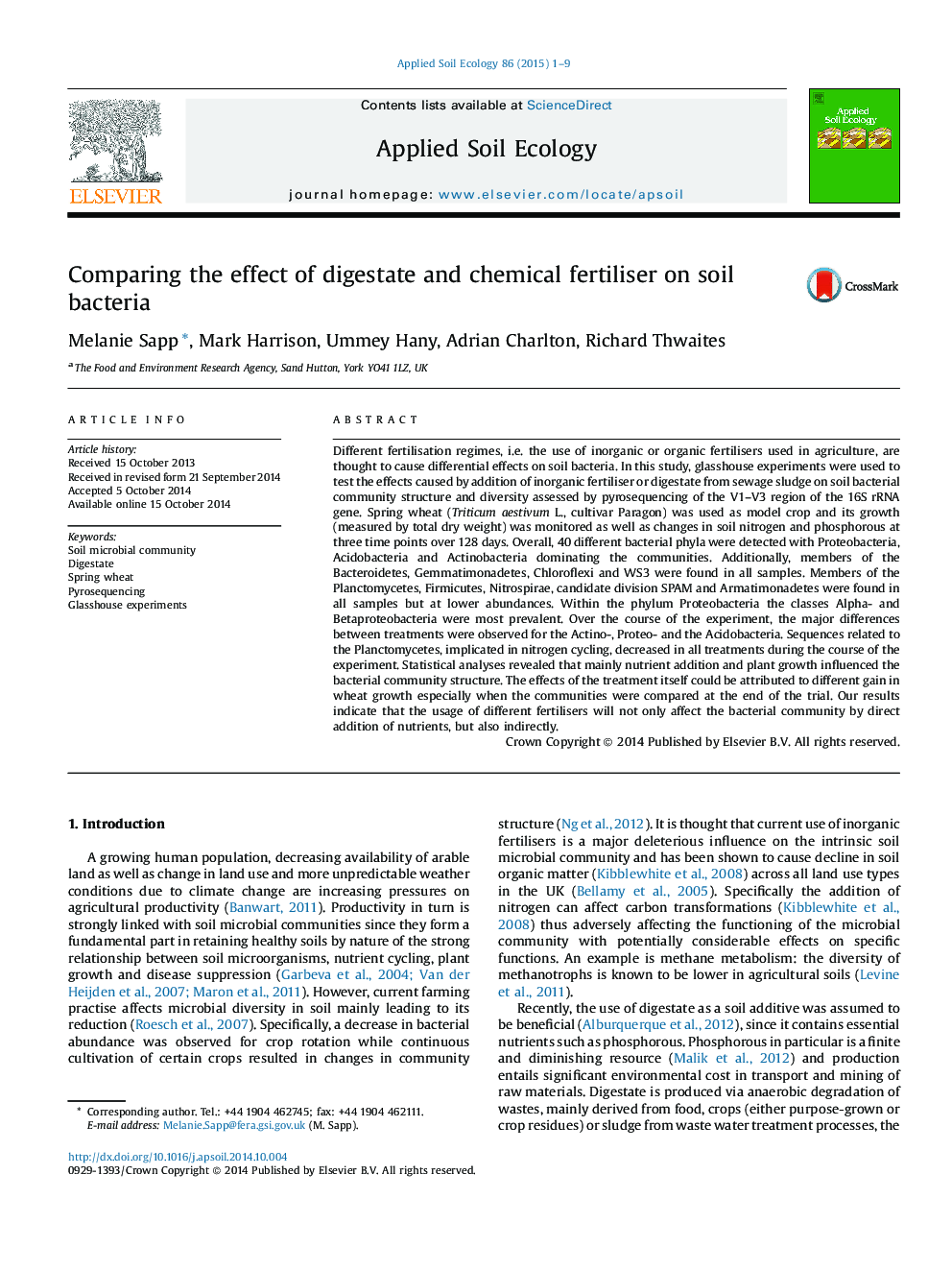| کد مقاله | کد نشریه | سال انتشار | مقاله انگلیسی | نسخه تمام متن |
|---|---|---|---|---|
| 4382087 | 1617797 | 2015 | 9 صفحه PDF | دانلود رایگان |
• We compare effects of inorganic fertiliser and digestate on soil bacteria taking into account the influence of a model plant.
• Soil bacterial diversity was studied using Roche’s 454 pyrosequencing technology.
• We use multivariate statistical approaches in combination with next generation sequencing data.
• Soil bacterial communities are affected by different fertilisers directly and indirectly.
• Use of digestate as fertiliser promotes soil microbial diversity.
Different fertilisation regimes, i.e. the use of inorganic or organic fertilisers used in agriculture, are thought to cause differential effects on soil bacteria. In this study, glasshouse experiments were used to test the effects caused by addition of inorganic fertiliser or digestate from sewage sludge on soil bacterial community structure and diversity assessed by pyrosequencing of the V1–V3 region of the 16S rRNA gene. Spring wheat (Triticum aestivum L., cultivar Paragon) was used as model crop and its growth (measured by total dry weight) was monitored as well as changes in soil nitrogen and phosphorous at three time points over 128 days. Overall, 40 different bacterial phyla were detected with Proteobacteria, Acidobacteria and Actinobacteria dominating the communities. Additionally, members of the Bacteroidetes, Gemmatimonadetes, Chloroflexi and WS3 were found in all samples. Members of the Planctomycetes, Firmicutes, Nitrospirae, candidate division SPAM and Armatimonadetes were found in all samples but at lower abundances. Within the phylum Proteobacteria the classes Alpha- and Betaproteobacteria were most prevalent. Over the course of the experiment, the major differences between treatments were observed for the Actino-, Proteo- and the Acidobacteria. Sequences related to the Planctomycetes, implicated in nitrogen cycling, decreased in all treatments during the course of the experiment. Statistical analyses revealed that mainly nutrient addition and plant growth influenced the bacterial community structure. The effects of the treatment itself could be attributed to different gain in wheat growth especially when the communities were compared at the end of the trial. Our results indicate that the usage of different fertilisers will not only affect the bacterial community by direct addition of nutrients, but also indirectly.
Journal: Applied Soil Ecology - Volume 86, February 2015, Pages 1–9
